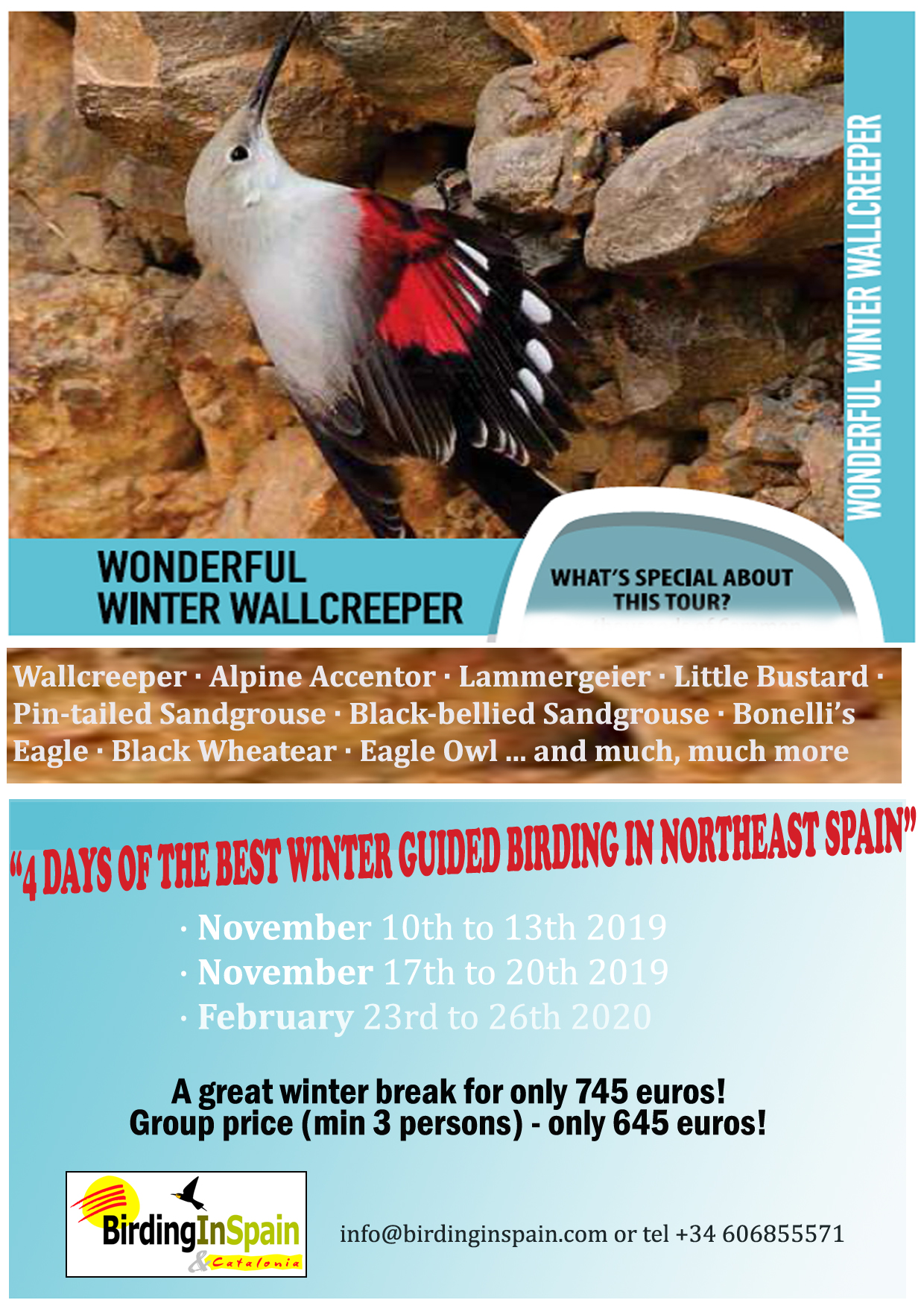El Pou del Mano
Note: The translation of the title “Pou del Mano” from Catalan to English is “Mano’s Well”. “Mano” is the village nick-name of Florinda’s parents’ household, for this generation mostly applied to Salvador, Florinda’s father.
Bovera, Les Garrigues, Catalonia.
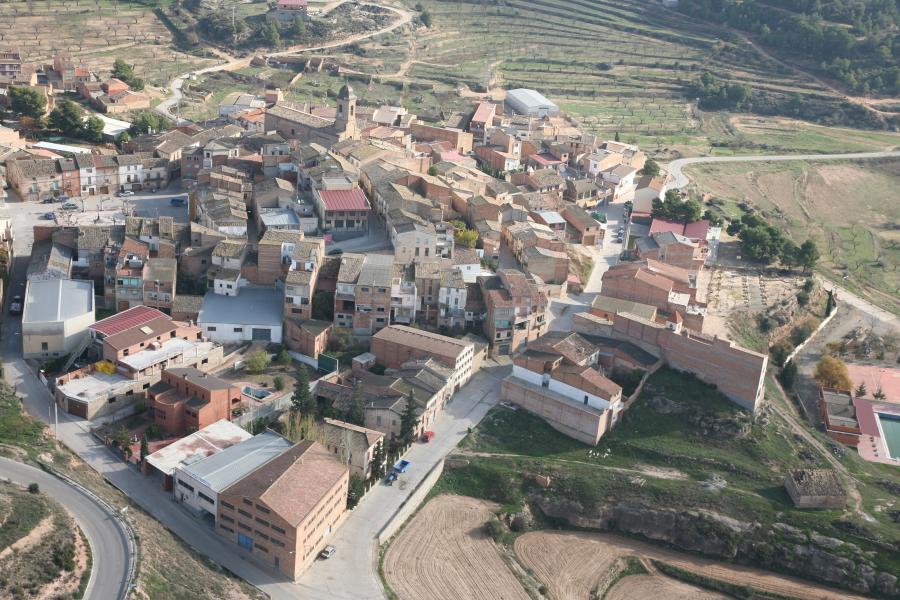
The village of Bovera in the Garrigues, Catalonia
A new chapter has opened in our lives, and it’s taking on ever increasing dimensions. In July 2016 things kicked off with my idea of building a small drinking pool for birds, down near the “pou” (well). The smallish plot, about 2,000m², once held apple and peach trees, which Salvador, my father-in-law, used to irrigate from the water he drew from a well in the middle of the plot . Rather tentatively I put the idea to Salvador and, fortunately, he had no reservations, “Do what you like with it”, he said. Even though the land had lain idle for about 30 years, after he had uprooted the drought-stricken trees, it was still a relief to me to hear those words, as I still felt like an outsider on most things related to Florinda’s village. Little by little though, the initial project would expand and take on new dimensions and provide a source of new endeavours, and some disappointments and headaches too.
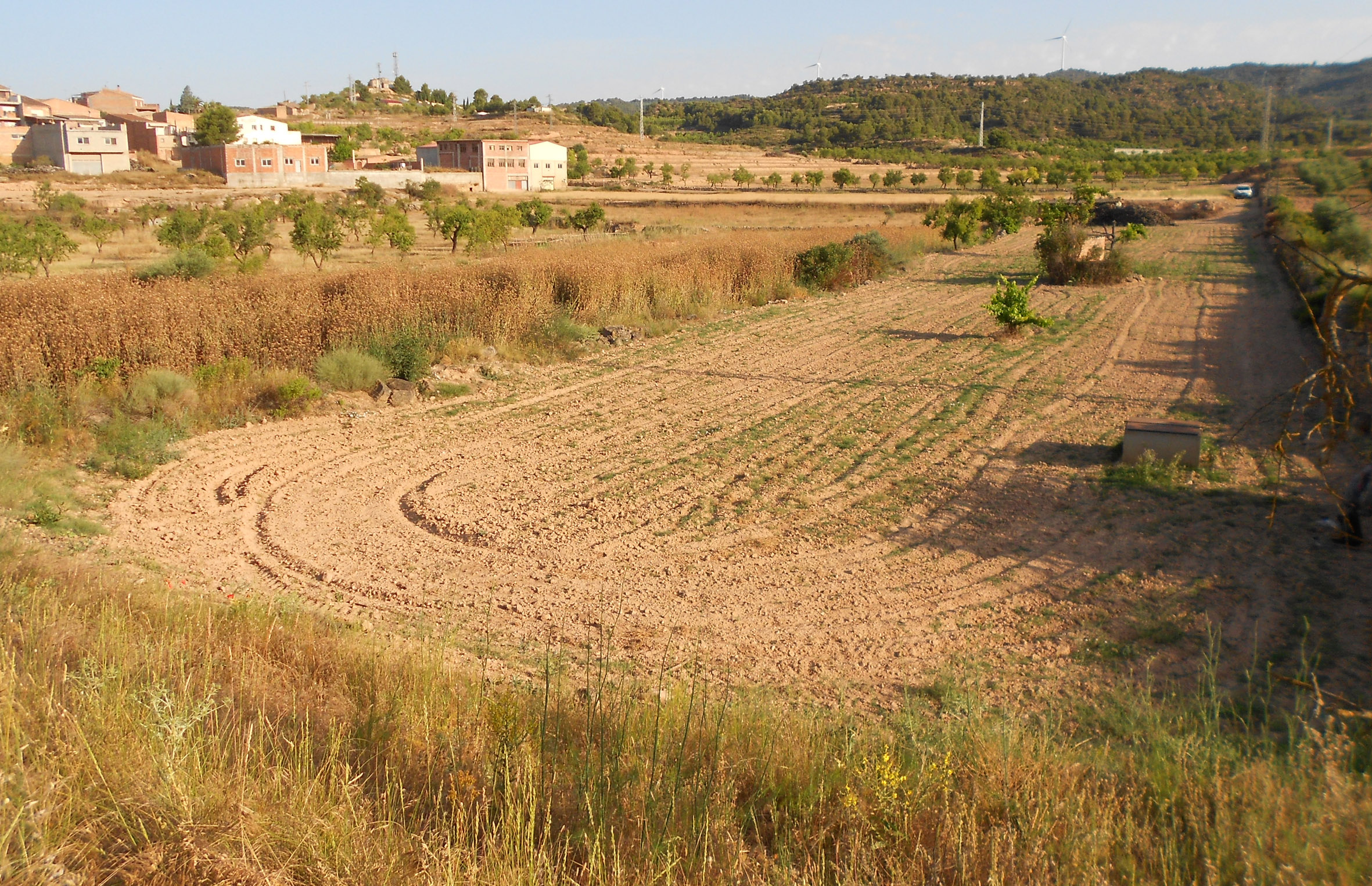
The view towards the well – centre – and Bovera village – left
So, once in place with all the necessary materials for building a modest drinking pool – a roll of heavy duty black plastic liner, old discarded clothes, burlap (bought on the internet and sent from India), cutter, spade, pick-axe, hoe, string, tape measure – I was alone before the beast of doubt. What shape should the pool take? How deep? How would I stabilize the margins? Should I try and incorporate plants? Is there any need for an overflow? And so on.
Well, here are some photos from that very first day (and later), when there were more doubts than realities.
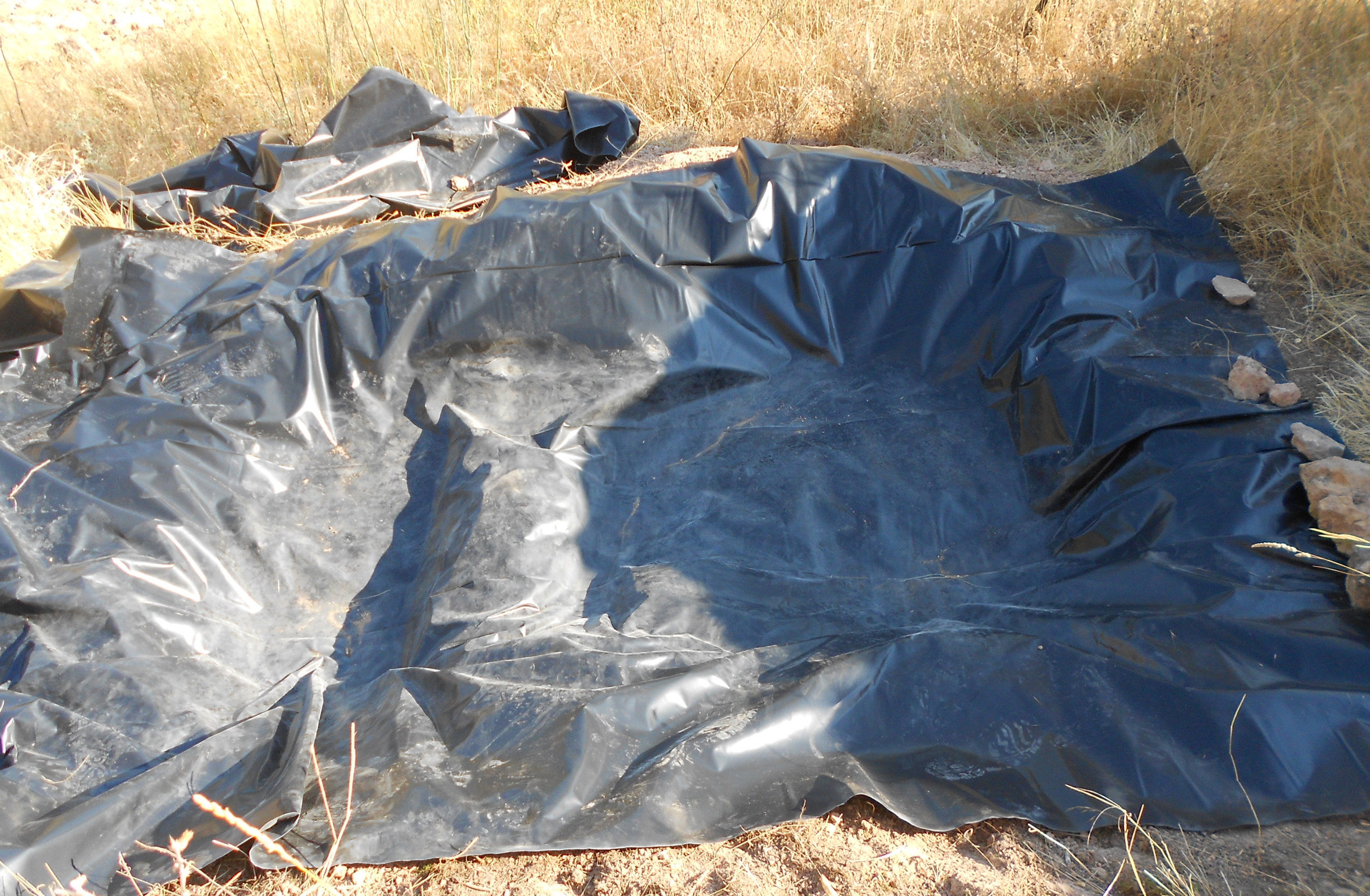
New drinking pool in the making I
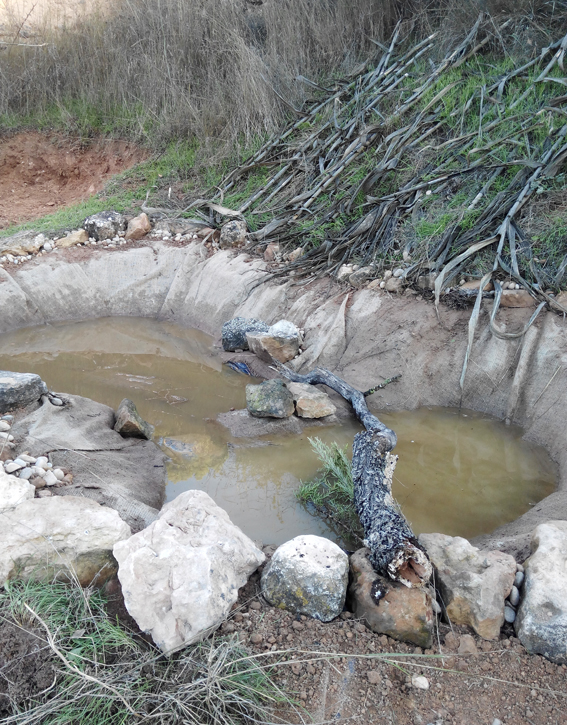
New drinking pool in the making II
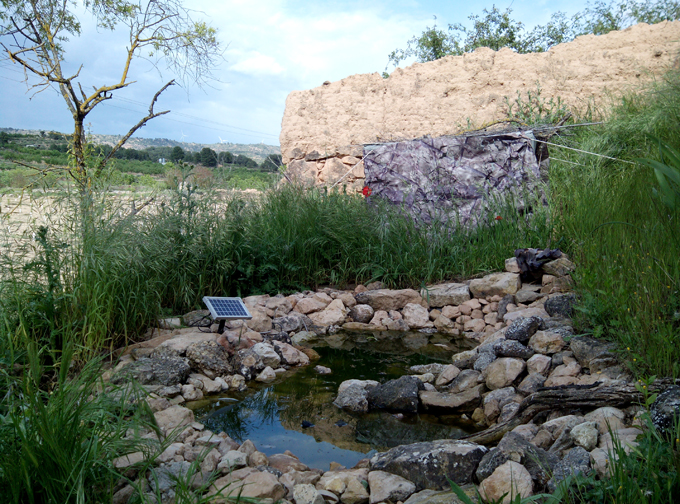
New drinking pool in the making – the finished product?
That was almost three years ago. In that time the pool has been a focal point for much of the local wildlife, in particular birds, but also the odd toad, timid nocturnal badgers, foxes and stray dogs, dragonflies, bees and wasps, and mosquitoes. Damn the mosquitoes.
I also set up a hide, rescued from the days when we dealt directly with international photographers on the Lleida plains, coming to photograph Little Bustards, Little Owls, Stone Curlews and the like. However, after two years of accustomization the birds are fine with it, but I have yet to find the time to get in there and take some photos or videos! The trail cam, however, did much of the job for me, and after the first session of going through about 2,000 photos I proudly declared that we had already had 30 species of avian visitors to the pool, and that was even before the spring migration period had started. At that time Hawfinches were everywhere, and the pool was no exception, but the camera also recorded one of only two records of Brambling for the village, this one a fine male coming out of winter plumage. However, for me the most enjoyable scenes were the starlings, both Spotless and Common, which made a regular appointment in the early afternoon, to come down, drink, bathe and socialize in groups of 5, 10, 20 or more, before continuing the party by flying off to the roofs and the village church for the end of the day chatter and sing-song.
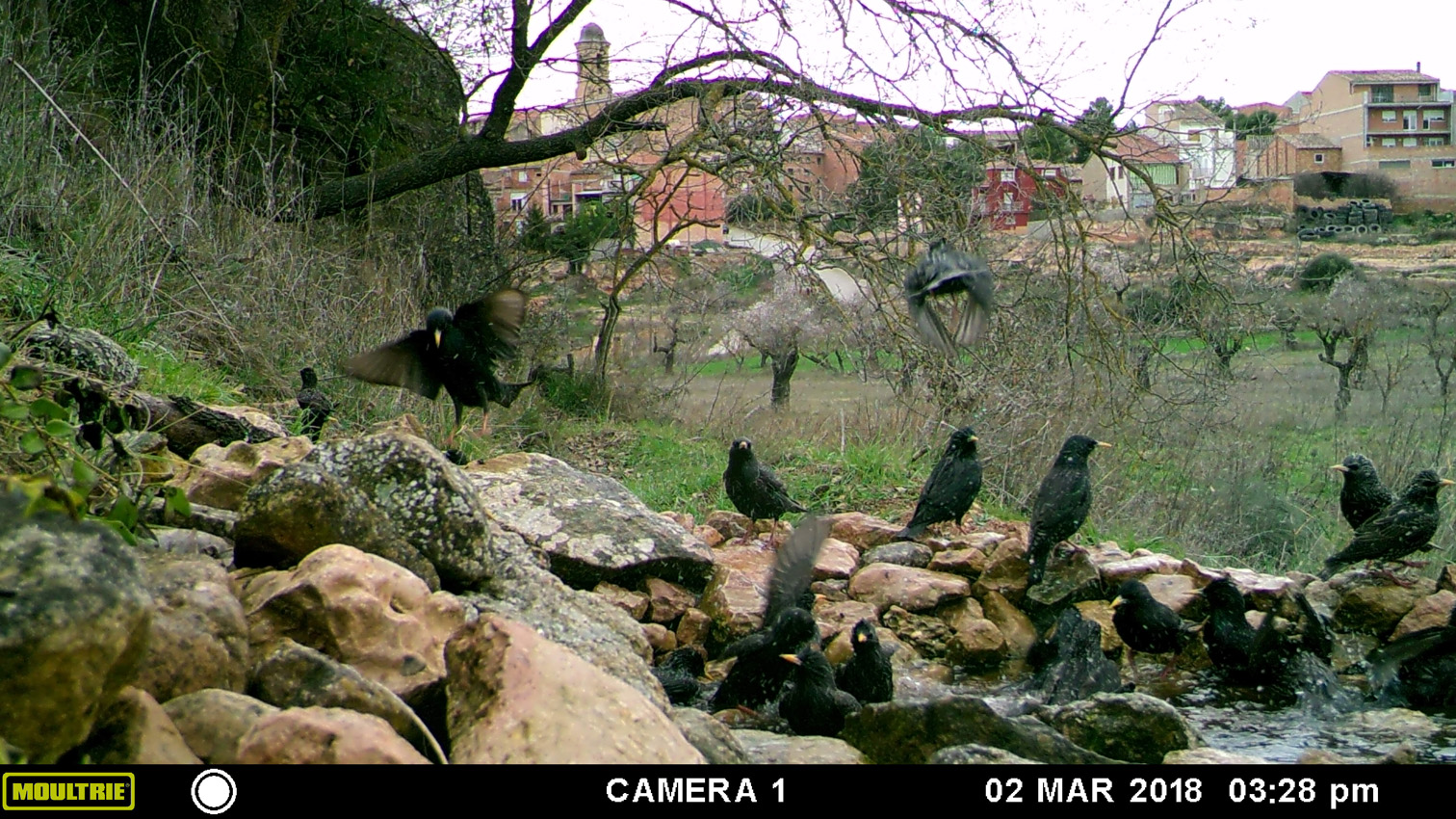
Starling festival at Bovera I
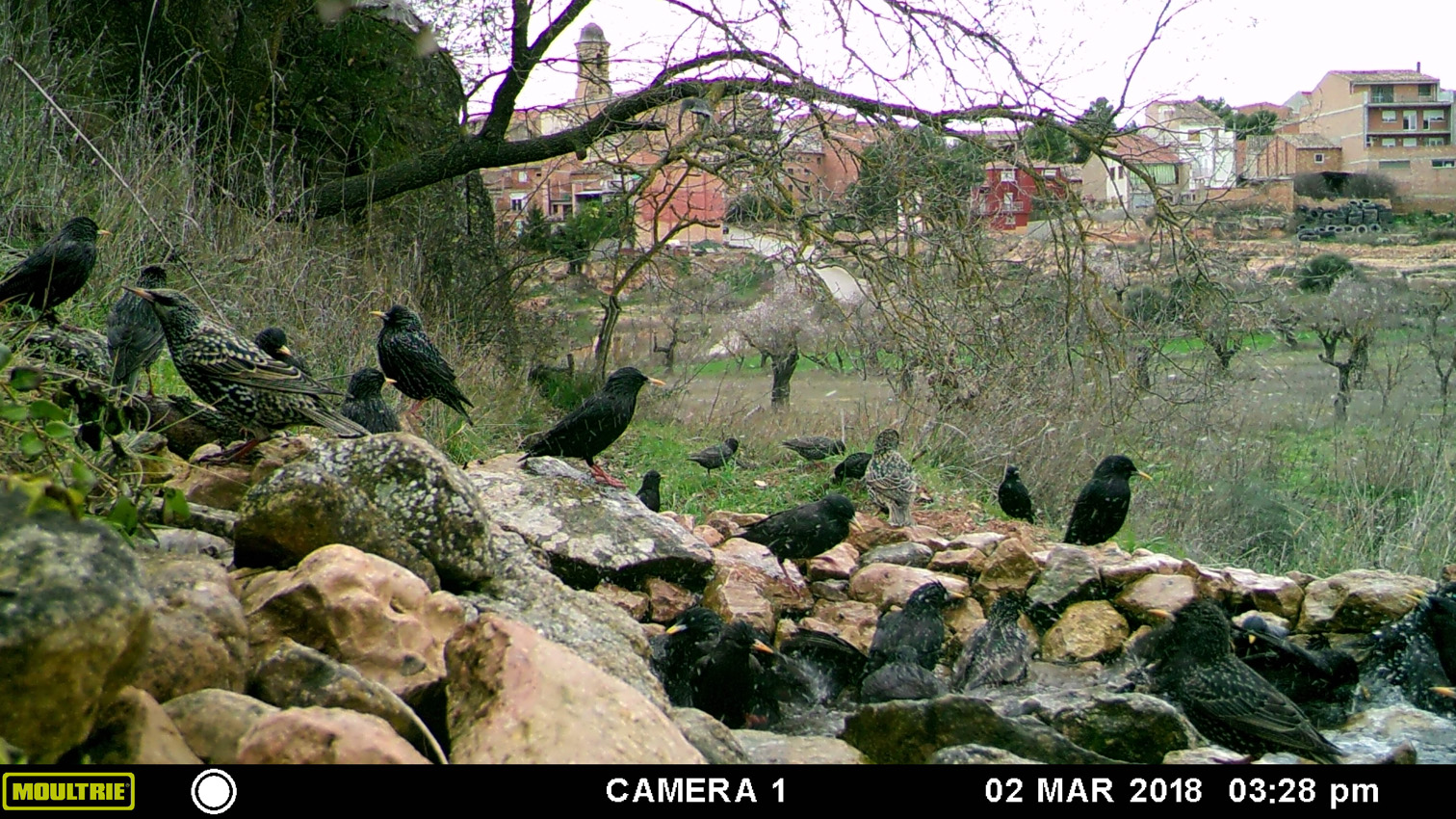
Starling festival at Bovera II
Next post: Figures of 8 – Pool-making considerations for humans

